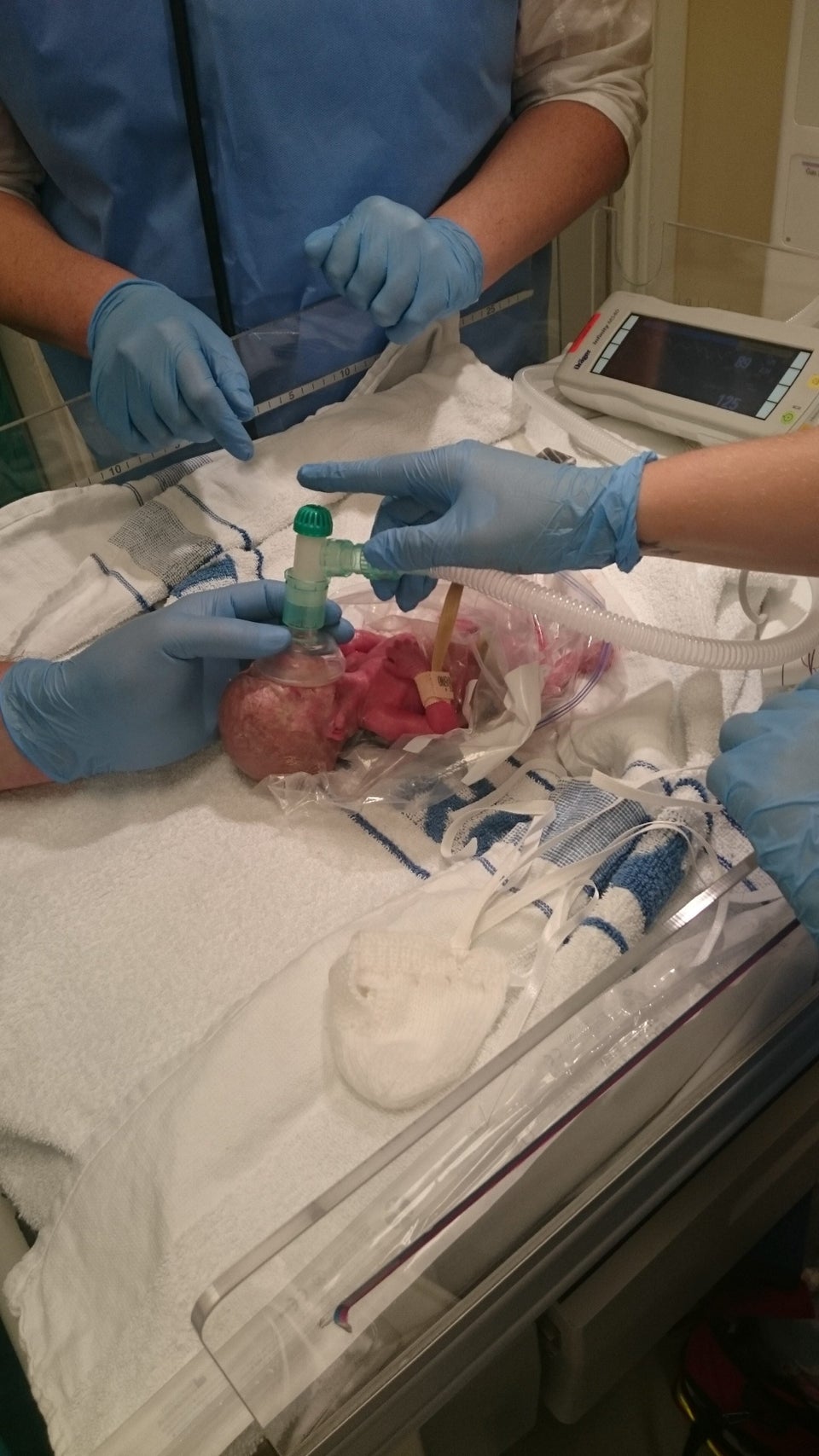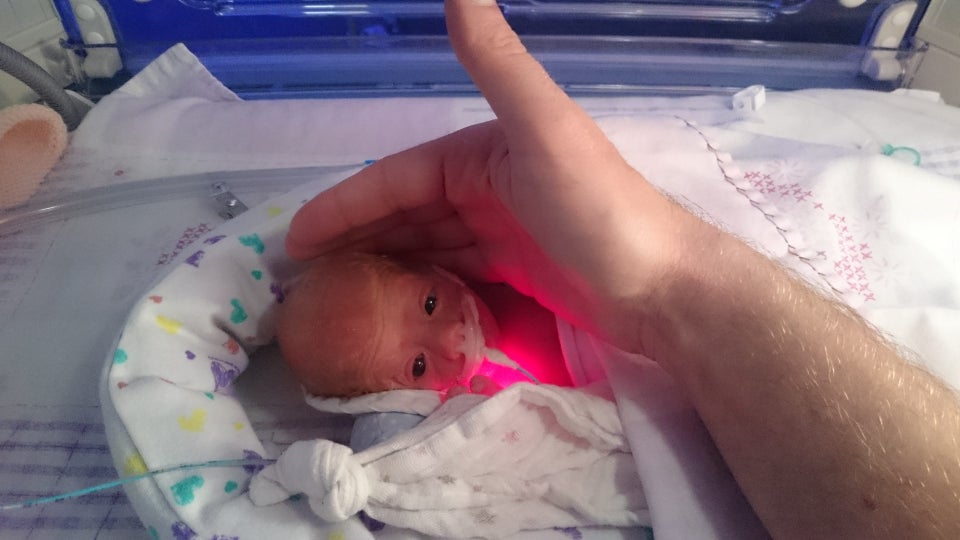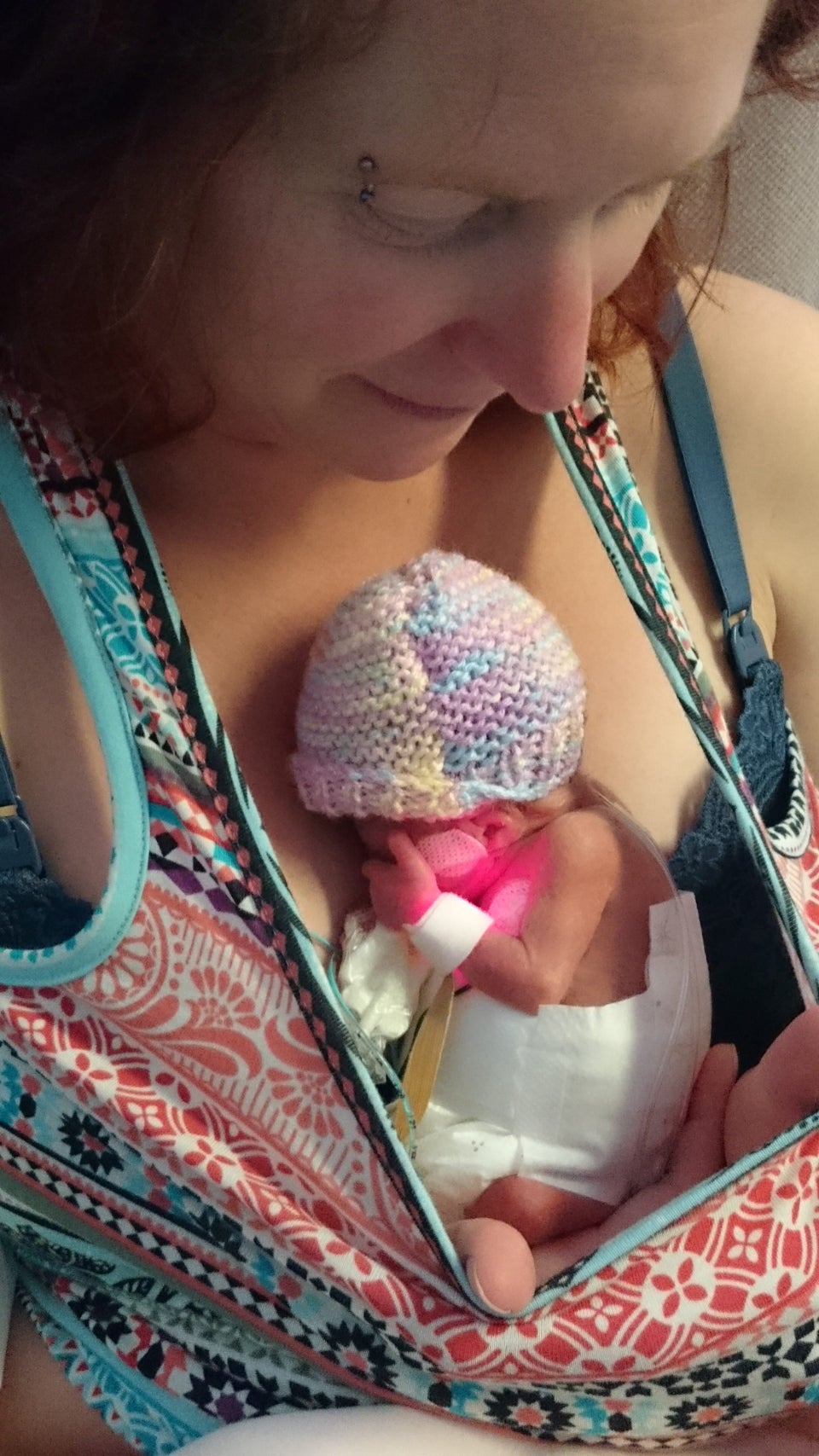
Pixie Griffiths-Grant weighed barely more than a pound when her mother, Sharon Grant, gave birth at Derriford Hospital in Plymouth, England. Delivered by emergency Caesarean section at only 28 weeks, Pixie was so tiny and fragile that doctors used an unusual way to keep her warm: they placed her inside a sandwich baggie.
Born three months premature, the infant had stopped growing in the womb after only 20 weeks because her mother's placenta and umbilical cord weren't functioning properly. She was smaller than her mother's hand when she was born, The Telegraph reports.
Moments after her birth, the 1.1 pound baby's weight decreased to a pound. Doctors didn't expect her to survive longer than an hour. To keep her temperature steady, they placed her in a sandwich bag from Tesco, a supermarket chain headquartered in England, before sending her to intensive care.
"It was so random that they had her in the Tesco bag -- it must have just been what the operating theatre had at the time," Grant told The Telegraph.
Though seemingly novel, sandwich bags are effective in warming premature babies, according to a New York Times article from 2013. Babies' thin skin means water evaporates through it quickly, so putting them in plastic bags before wrapping them in blankets can keep them warmer than a blanket alone.
"Wrapping extremely small newborn babies in plastic (occlusive wrapping) protects them from hypothermia immediately following birth. The neonatal department uses a clean, appropriately small plastic bag, which does not need to be sterile," Róisin McKeon-Carter, Clinical Director of Neonatal Service at Plymouth Hospitals NHS Trust told The Huffington Post.
"The plastic bag, hat and towels used for newborn resuscitation are all aseptically clean, not sterile," she added.
In a statement released by Plymouth, Neonatology Consultant Dr. Giles Richardson said Pixie's treatment was no different than that of any other child born before 28 weeks or under 1500 grams (3.3 pounds).
"It is now a standard treatment, where the wet newborn infant's body and limbs are placed into the bag, under a heater, which creates a greenhouse effect, and this is the most effective way of maintaining their temperature in the golden hour after birth and until they are placed into a warm, humid incubator for ongoing care," he said.
The bag may have helped save the baby's life, but Grant wasn't even able to hold her daughter for a full 18 days after the birth. Handling ran the risk the baby would lose weight again, The Telegraph reports.
Now five-months-old, baby Pixie beat the odds and has grown larger and stronger.
“It was amazing that she survived. She really did live hour by hour for three weeks," Grant told The Telegraph.
"We have been in and out of hospital a lot since she got home, and she can't be around other children or ill people because if she gets a cold she will end up on oxygen again," Grant said. "But at the moment she is doing really well. She looks really nice and healthy."
H/T New York Post



